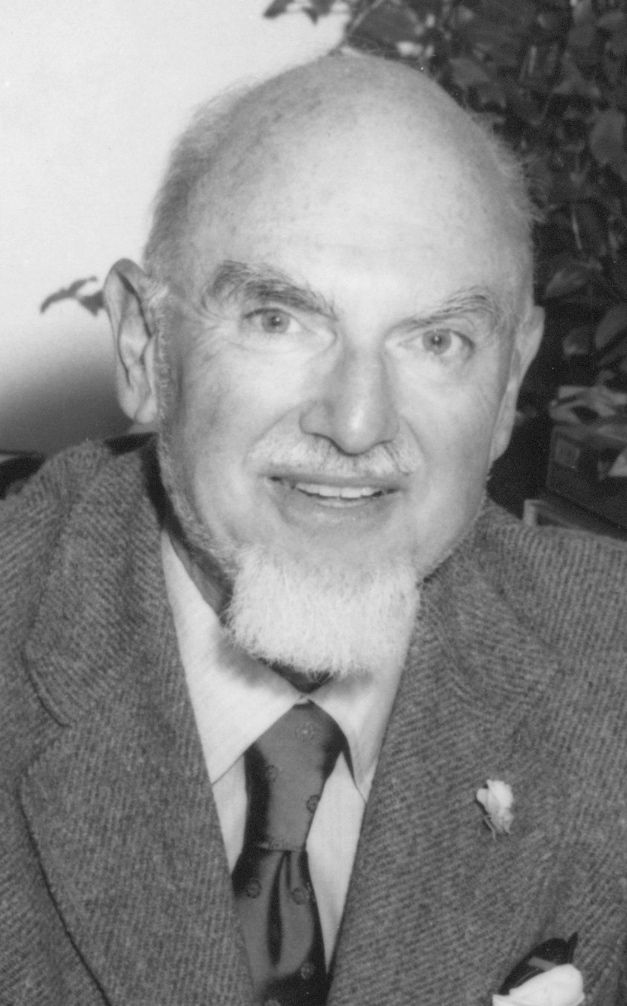

|

|
IN MEMORIAM
Elwin Marg
Professor of Optometry, Emeritus
UC Berkeley
1918 - 2010
Elwin Marg was associated with the School of Optometry at the University of California, Berkeley, since entering it as an undergraduate in 1938. In 1940, he received an A.B. in physiological optometry and a Certificate in Optometry. He then served on the school’s faculty until he retired in 1988. He died in Berkeley on July 15, 2010, survived by his daughter Tamia Marg Anderson of Berkeley. His wife Helen predeceased him in 2001. Rare among optometrists of his generation, he extended his interest to research in vision science and was the first to receive the Ph.D. in the school in 1950. During the Second World War he served as a communications officer in the U.S. Air Force with postings in Ireland, Tunisia, and Italy. During the Korean conflict he was recalled to perform research at Wright-Patterson Air Force Base in Dayton, Ohio.
Marg rose through the ranks on the Berkeley faculty (instructor, 1950; assistant professor, 1951; associate professor, 1956; professor, 1962), with two sabbatical leaves at the Nobel Institute of Neurophysiology, Karolinska Institute, Stockholm, working with Ragnar Granit, future Nobel laureate, in 1956 and 1964, the latter under a Guggenheim Fellowship. Although in later years not particularly inclined toward clinical work, as co-inventor in the late 1950s of the Mackay-Marg tonometer for measurement of intraocular pressure he made a contribution that significantly facilitated the passage of his profession from emphasis on the purely optical, as it was when he entered it, to embracing the whole ocular system, as it does now.
As a scientist, Elwin was constantly looking not towards the well-trodden paths but ahead in directions that would take decades to become mainstream. At least a quarter of a century before it became the norm, he developed a neurophysiological laboratory devoted to animal preparations at the School of Optometry. In this he had the active support of two of the early deans of Berkeley’s School of Optometry, Kenneth Stoddard and Meredith W. Morgan, who recognized the potential for this work on a campus where biological research has always had a significant presence. Marg probed not the geniculate-striate pathway, which was the interest of most other researchers at the time, but the neuronal input to the supra-chiasmal region, only recently identified as providing signals from the eye for the circadian rhythm. Later he collaborated with a group of neurosurgeons at the University of California, San Francisco, in recording nerve action potentials from electrodes in the brain of conscious patients, a revolutionary procedure even now.
In retirement, Elwin assumed other uncommon roles. With his wife, he established the Minerva Foundation to recognize significant research in the brain and vision, and he was instrumental in selecting a stellar lineup of the elite of neurophysiological research to receive its award. Looking even farther ahead to a time in the distant future when the frontier of science would reach wider areas of human experience, he spearheaded the discipline of neuroesthetics, organizing, into his nineties, international symposia and conferences in which scientists, philosophers, and artists interacted.
Among Elwin’s graduate and postdoctoral students, with whom he maintained a warm, loyal, and supportive relationship, are Richard M. Hill, dean emeritus of the College of Optometry at Ohio State University; Duco Hamasaki, at the Bascom-Palmer Institute in Miami; and the late Hugh Goodwin.
With the enviable advantage of a financially secure family background, Marg was able to develop academically in his profession at a top research university and gain immediate and full acceptance. In addition, his career in optometry and science was fostered and encouraged by his mentors and faculty supervisors, deans Stoddard and Morgan. A fellow of the American Association for the Advancement of Science and of the American Academy of Optometry, he was awarded the latter’s Prentice Medal in 1981. The School of Optometry named him Alumnus of the Year in 1993 and inducted him into its Hall of Fame in 2002.
As time progressed, Elwin identified less and less with the mainstream of activities in Berkeley’s School of Optometry. At an earlier time, the clinical and preclinical teaching in the School of Optometry were fully integrated. Except for Gordon Walls, a towering figure at an international level in the evolution of the vertebrate eye, everyone from Dean Stoddard down spent some time every week in the clinic. Elwin, intent on a separation of science and clinical practice, resisted this trend and succeeded in being exempted from the practice. Much later, he challenged the rules governing retirement at age 70 in the UC system when they were applied to him, and secured an exception.
Associated with Berkeley’s School of Optometry for some 80 percent of the time since it was founded, its first Ph.D. in physiological optics, a pioneering researcher, and for many years its link to the wider scientific community, Elwin Marg occupied a unique position in the school that will never be equaled.
Gerald Westheimer
2010